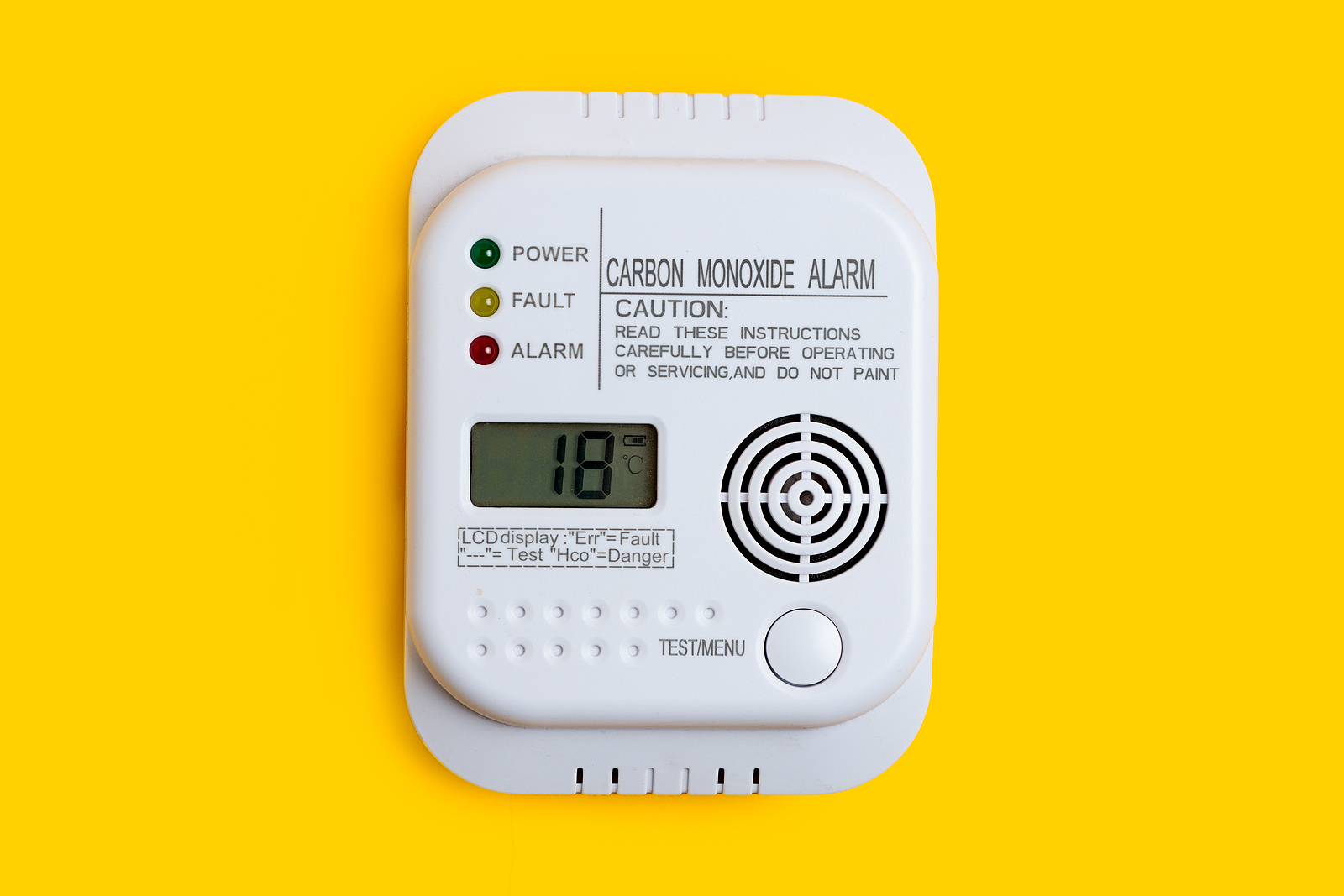Your home’s indoor air plays an important role in the health of you and your family. Poor indoor air quality can contribute to health problems like asthma and allergies, and the effects of toxins like radon and carbon monoxide can be even more serious. Testing your indoor air quality is an important part of ensuring your home’s air is safe to breathe. Here’s what you need to know about indoor air pollutants, signs of poor air quality, how to maintain good indoor air quality, and how to test the air in your home. What Health Hazards Are Commonly Found in Indoor Air? Your home’s indoor air can be affected by pollutants coming from a number of sources — from the materials used in construction to carpet and furniture fabrics to mold and mildew due to poor ventilation. Some of the most common pollutants found in homes are: Mold and mildew: typically grow on surfaces due to ventilation issues or high indoor humidityRadon: an odorless, colorless gas and the second leading cause of lung cancer after smokingCarbon monoxide: another odorless, colorless gas that can be deadly if left uncheckedVolatile organic compounds (VOCs): emitted by building materials and household products; can exacerbate existing respiratory conditionsParticulate matter, including dust mites and other allergens: can cause shortness of breath, chest congestion, or wheezing, and are linked to increased risk of heart-related health issues When Should I Test My Air? Signs of Poor Indoor Air Quality For the most part, the Environmental Protection Agency (EPA) doesn’t recommend general indoor air quality testing, and there is no single test that can measure every aspect of the air quality in your home. However, there are specific tests for some pollutants, so it can be helpful to know the signs and symptoms to watch for to determine what tests you will need. Some indoor air pollutants cause obvious symptoms: for instance, nausea, confusion, dizziness, and headaches are often signs of dangerous levels of carbon monoxide in the home. And mold and mildew are typically easy to spot. Other pollutants may require a bit more observation to narrow down. Notice, for instance, if you start coughing when you enter a certain room or have health symptoms that disappear when you’re at the office or on vacation. Symptoms of allergens or other particulate matter in your air can include: CoughingWheezingShortness of breathScratchy throatWatery eyes Radon, one of the most dangerous substances that can affect your indoor air, causes no immediate symptoms at all — but long-term exposure can lead to serious health problems. This is why radon testing is often performed when a home is sold. If you bought your home many years ago, or a radon test wasn’t done when you bought it, it may be a good idea to have one done now. How To Test Your Indoor Air Quality Evaluate any symptoms you are experiencing, along with input from your doctor. Once you have things narrowed down, you can have your home tested for the pollutants you suspect may be an issue. Radon test kits can be purchased online or in many home improvement stores, or you can hire a professional to do it for you. To test for other pollutants, you’ll need to hire someone. To find reputable indoor air quality specialists, look to an organization like the Indoor Air Quality Association for a list of members. Or ask a local real estate agent or home inspector for a recommendation — both should have connections to air quality specialists in your area who can help with both testing and mitigation of pollutants. Ways To Improve Indoor Air Quality Beyond testing your indoor air quality, there are a few things you can do...
Read MoreWhen we consider the quality of the air we breathe, we tend to think of outdoor air pollution, but we don’t often think about pollution in the air inside our homes. But in many cases, indoor air can be just as polluted, if not more so, than the air outside. Poor indoor air quality can cause or contribute to an array of health problems - some minor, others much more serious. Let’s take a look at how the air you breathe could be impacting your health. What Causes Poor Indoor Air Quality? Many things can cause the air in your home to become polluted: Dust Mold Mildew Smoke from cigarettes or cooking Fumes from carpet and furniture Bacteria or viruses Pet dander Cleaning products Air fresheners and more can all diminish the quality of the air you breathe. All of your day-to-day activities ultimately contribute in one way or another to the air quality in your home. Additionally, improper ventilation and high humidity can increase the concentration of pollutants in the air, further contributing to the problem. Health Effects Associated With Poor Air Quality The effects of exposure to poor indoor air quality vary depending on many factors, including the type and concentration of pollution in the air, the sensitivity level of each person, and the length of exposure to the pollutant. If you have symptoms at home but they diminish or disappear when you leave, it’s possible you are experiencing the effects of poor air quality. Some of the health effects that polluted indoor air contributes to are: Immediate effects: Irritation of the eyes, nose, throat, or skin Headaches Dizziness Fatigue Shortness of breath or mild asthma Long-Term Effects: Respiratory disease Rapid heartbeat or heart disease Nausea or vomiting Worsening asthma symptoms Lung cancer These long-term effects can happen in cases where you are exposed to particularly harmful pollutants (such as radon or ozone) or to a high concentration of less harmful pollutants for an extended period of time, and you may not notice more severe symptoms for many years. Also, some people are more sensitive to pollutants than others, so all family members may not experience the same symptoms. How to Improve Indoor Air Quality There are a number of ways to improve the quality of the air in your home, ranging from simple things you can try on your own to bigger changes that require help from a professional. Opening up the windows for ventilation, opting for cleaning and personal care products that produce less toxic fumes, running a dehumidifier on humid days, changing your air filter regularly, and having your HVAC system professionally cleaned can significantly improve your indoor air quality. For an even greater improvement in your home’s air quality, consider installing a whole-house ventilation system or adding an air purifier to an existing system. Product Spotlight: BreatheCLEAN Air Purifier Here at Titan we recommend the BreatheCLEAN Total Home Air Purifier for the ultimate in indoor air purification. BreatheCLEAN uses the power of pure ultraviolet light to kill airborne microorganisms such as germs, bacteria and mold. It easily installs into the existing ductwork of your home’s central ventilation system and continually cleans the air as it circulates. No competing model offers more effective purification for your home, and the BreatheCLEAN system costs less than you’d think. If you’re ready to improve the quality of your indoor air with an air purifier, upgraded air filter, new dehumidifier, or professional HVAC cleaning, Titan Heating & Cooling has what you need. Give us a call at 651.714.8931 or contact us here. ...
Read More



